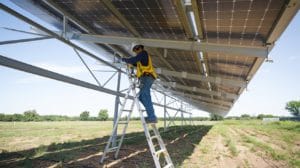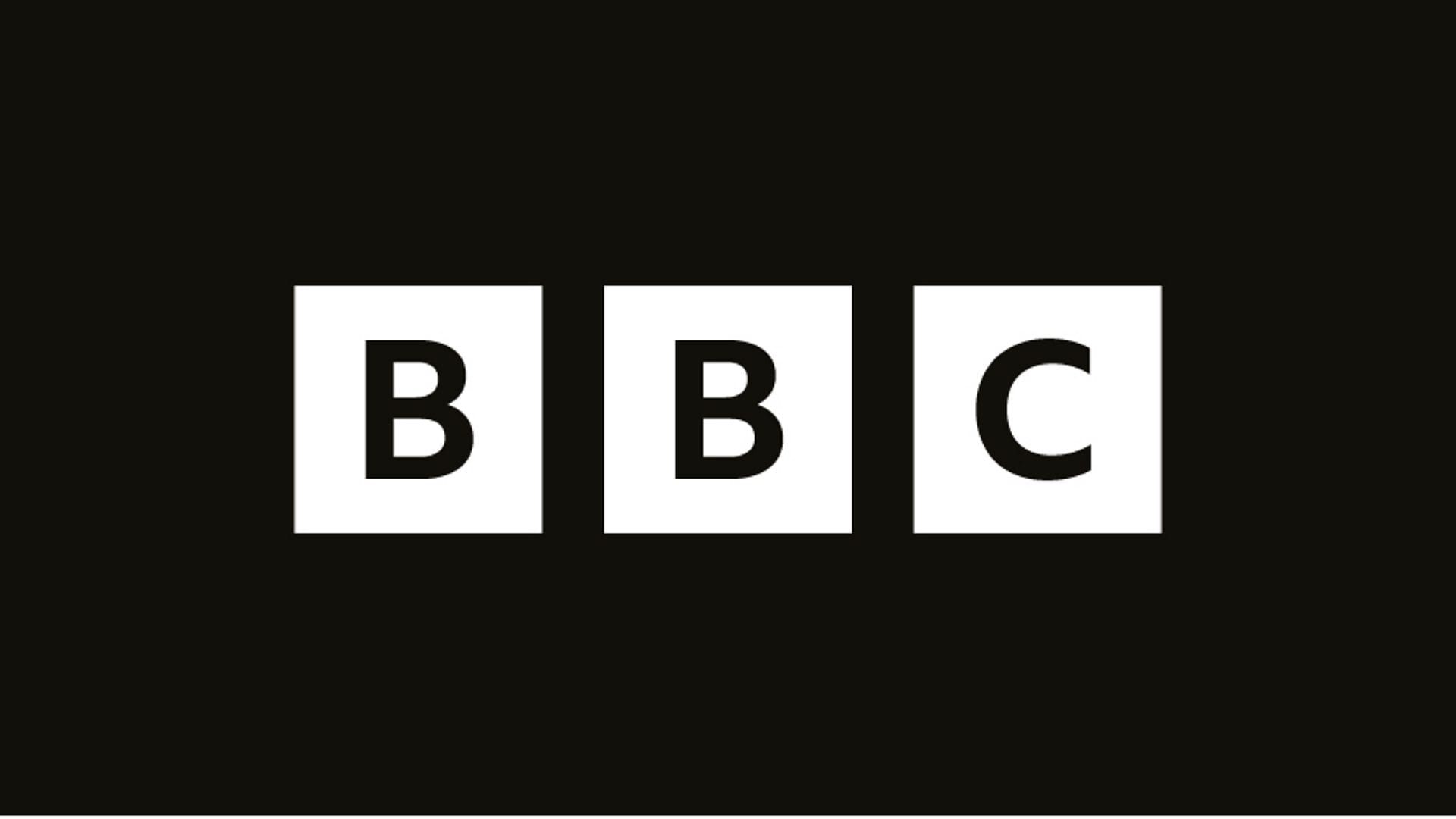Commercial Solar Panels
Making your business more energy efficient.
Commercial solar panels offer businesses a way to cut energy costs and reduce their carbon footprint. These systems can cost between £16,000 and £60,000 for small to medium-sized companies, with payback periods of 4 to 5 years on average. You’ll find that commercial solar installations come in various sizes, typically ranging from 20kW to 50kW, to suit different business needs and roof spaces.
By installing solar panels, your company can generate its own electricity and even sell excess power back to the grid through schemes like the Smart Export Guarantee. This approach not only lowers your energy bills but also helps your business become more environmentally friendly. Many firms are turning to solar power as a long-term solution for sustainable energy management.
As you consider solar panels for your business, it’s important to work with reputable installers who can provide tailored advice and quotes. They’ll assess your energy usage, roof suitability, and budget to design a system that maximises your return on investment. With proper planning and installation, commercial solar panels can provide clean, renewable energy for over 25 years, making them a smart choice for forward-thinking businesses.
Sectors
Listed below are the sectors we work in as a commercial solar installation specialist.

Airports

Manufacturing & Engineering

Food & Drink Production

Data Centres, Telecoms & IT

Healthcare & Pharmaceuticals

Wholesale & Retail

Transport & Logistics

Cold Storage

Warehouse & Distribution Centres

Sports & Leisure

Tourism & Hospitality

Public Sector

Commercial Landlords

Farms & Landowners

Schools & Academies

Universities

Construction

Non Profit
What Are Commercial Solar Panels?
Commercial solar panels are large-scale photovoltaic systems designed for businesses and organisations to generate clean electricity. These systems help reduce energy costs and lower carbon footprints for companies of all sizes.
Types of Commercial Solar Systems
Commercial solar systems come in various configurations to suit different needs:
- Rooftop systems: Installed on flat or sloped roofs, these are common for businesses with limited ground space.
- Ground-mounted arrays: Ideal for companies with ample land, offering more flexibility in panel placement.
- Carport systems: Dual-purpose structures that provide shade for vehicles while generating power.
Each type has its advantages. Rooftop systems save space, ground-mounted arrays can be optimised for sun exposure, and carports offer added functionality.
Key Components and Technologies
Commercial solar systems consist of several crucial parts:
- Solar panels: Large, flat devices that capture sunlight and convert it to electricity
- Inverters: Convert DC power from panels to AC power for use in buildings
- Mounting systems: Secure panels to roofs or ground structures
- Monitoring equipment: Tracks system performance and energy production
Modern commercial panels often use monocrystalline technology for high efficiency. Some systems incorporate tracking mechanisms to follow the sun’s path, maximising energy capture throughout the day.
Size and Power Output Specifications
Commercial solar systems vary widely in size and output:
- Small business systems: 10-50 kW
- Medium-sized installations: 50-250 kW
- Large commercial arrays: 250 kW to several megawatts
A typical commercial panel measures about 195 cm x 100 cm. A 10-panel system covers roughly 10 m² of space.
Power output depends on factors like panel efficiency, sunlight exposure, and system size. On average, UK commercial systems can produce:
- Small systems (20 kW): 17,000-20,000 kWh per year
- Medium systems (50 kW): 42,500-50,000 kWh per year
These figures help businesses estimate potential energy savings and return on investment when considering solar power.
Services
Listed below are the types of businesses we supply commercial solar panels to:
Commercial Battery Storage
Commercial solar battery storage systems represent a transformative solution for businesses seeking to optimise their energy management and reduce operational costs.
Solar Carports
Solar carports represent an innovative fusion of sustainable architecture and practical vehicle protection, combining photovoltaic systems with robust carport structures to generate clean electricity whilst sheltering your vehicles.
Large scale Solar Parks
Large scale solar parks require careful consideration of multiple factors to ensure optimal site selection and development success. Your solar power plant development begins with securing appropriate planning permission from the relevant local planning authority, while the ideal location should prioritise previously developed land or lower-grade agricultural sites to maintain environmental responsibility.
Solar Panel Operations & Maintenance
Your solar panel system requires professional preventive maintenance and continuous performance monitoring to maintain optimal energy output throughout its operational lifetime. Solar farm operations depend heavily on implementing a robust maintenance schedule that includes regular panel cleaning, performance analysis, and system efficiency checks, which directly impact your power generation capabilities and long term return on investment.
Clean energy Finance
Clean energy finance connects sustainable investment opportunities with renewable energy development, creating a robust framework for funding green initiatives. Your investment options span across multiple sectors, including projects from Solar Panel Manufacturers, Wind Turbine Producers, and Green Energy Investment Funds, all working to advance clean energy infrastructure investment projects.
Solar Monitoring
Your solar monitoring system delivers comprehensive real time monitoring of your solar installation’s performance through advanced module level monitoring capabilities. Through sophisticated data driven insights and predictive analytics, your solar system performance is continuously evaluated, ensuring optimal energy efficiency and maximum return on your renewable energy investment.
How Do Commercial Solar Panels Benefit Businesses?
Commercial solar panels offer businesses significant advantages in energy management and sustainability. They provide cost savings, environmental benefits, and financial incentives that can boost a company’s bottom line and green credentials.
Energy Cost Reduction Analysis
Commercial solar panels can drastically cut electricity bills. A typical 20-50kW system for small to medium-sized businesses costs £16,000 to £60,000. These panels generate free electricity during daylight hours, reducing reliance on the grid.
Many businesses see energy costs drop by 30-50%. The exact savings depend on:
- System size
- Energy usage patterns
- Local sunlight levels
Solar panels also protect against rising energy prices. As utility rates increase, your savings grow larger over time.
Environmental Impact Benefits
Installing solar panels shows your commitment to green energy initiatives. This can:
- Boost your brand image
- Attract eco-conscious customers
- Help meet sustainability targets
Solar energy is clean and renewable. It produces no emissions during operation. A typical commercial system can offset 15-20 tonnes of CO2 per year. That’s like planting 400 trees annually.
You’ll lower your carbon footprint and support the UK’s renewable energy goals. This may help you comply with future environmental regulations.
Government Incentives and Grants
The UK government offers several schemes to encourage businesses to adopt solar power:
- Smart Export Guarantee (SEG): Pays you for excess electricity sent to the grid
- Enhanced Capital Allowances: Tax relief on energy-efficient equipment
- Business rates exemption: For on-site renewable energy generation
Local councils may provide additional grants or low-interest loans. These incentives can significantly reduce your upfront costs and speed up the return on investment.
Return on Investment Calculations
Commercial solar panels typically break even in 4-5 years. After this point, you’ll enjoy free electricity for the rest of the system’s 25+ year lifespan.
Factors affecting ROI include:
- Installation cost
- Energy prices
- Government incentives
- System efficiency
Many businesses see returns of 10-20% annually on their solar investment. This outperforms many traditional investments.
Solar panels also increase property value. They’re a long-term asset that can attract buyers if you decide to sell your premises.
What Are the Installation Requirements for Commercial Solar Panels?
Commercial solar panel installation involves several key requirements. These include assessing the roof structure, determining space needs, following planning guidelines, and addressing grid connections.
Roof Structure Assessment
Before installing commercial solar panels, you need to check your roof’s condition and strength. A structural engineer should inspect the roof to ensure it can handle the extra weight. Solar panels typically add about 15-20 kg per square metre.
Your roof must be in good repair, with no leaks or damage. If repairs are needed, it’s best to do them before fitting the panels. The roof’s angle and direction also matter. South-facing roofs at a 30-40 degree tilt are ideal for maximum sunlight exposure.
Space Requirements
The amount of roof space you need depends on your energy goals. A rough guide is 10 square metres per 1 kW of solar panels. For a 30 kW system, you’d need about 300 square metres of roof space.
Consider these factors when planning your layout:
- Shading from nearby buildings or trees
- Access paths for maintenance
- Space for inverters and other equipment
A professional solar panel installation service can help you design an efficient layout for your site.
Planning Permission Guidelines
Most commercial solar panel installations in the UK don’t need planning permission. They often fall under ‘permitted development’ rules. But there are some limits:
- Panels shouldn’t stick out more than 20 cm from the roof slope
- They can’t be higher than the highest part of the roof (excluding chimneys)
- For flat roofs, panels must be at least 1 metre from the edge
If your building is listed or in a conservation area, you’ll likely need planning permission. Always check with your local council before starting work.
Grid Connection Considerations
Connecting your solar system to the grid requires approval from your Distribution Network Operator (DNO). You’ll need to inform them of your plans before installation starts.
For systems under 3.68 kW per phase, you can usually use a ‘fit and inform’ process. Larger systems need pre-approval from the DNO. This can take 4-8 weeks, so plan ahead.
You’ll also need:
- MCS certification for your installer
- G99 application for systems over 3.68 kW per phase
- Export meter for selling excess power back to the grid
Working with a certified commercial solar panel installation service can help you navigate these requirements smoothly.
TESTIMONIALS
What Our Customers Say
How Much Do Commercial Solar Panels Cost?
Commercial solar panels cost between £16,000 and £60,000 for small to medium-sized businesses in the UK. The price varies based on system size, type, and location. Let’s break down the costs and financial aspects.
Initial Investment Breakdown
The cost of commercial solar panels depends on the system’s size. A 10kW system ranges from £13,000 to £15,000. Larger systems, like 20kW to 50kW, can cost £16,000 to £60,000.
Factors affecting the price include:
- Panel quality
- Inverter type
- Mounting system
- Energy storage options
Higher-quality panels and advanced inverters increase costs but often provide better efficiency and longevity.
Installation Costs
Installation makes up a significant portion of the total cost. Factors influencing installation expenses include:
- Roof condition and type
- Building height and access
- Electrical system upgrades
- Planning permissions
On average, installation costs account for 10-20% of the total project budget. For a 50kW system, this could mean £6,000 to £12,000 in labour and setup fees.
Complex installations on older buildings or those needing extensive electrical work may cost more.
Maintenance Expenses
Solar panels need little upkeep, but some maintenance is needed to keep them working well. Yearly costs typically include:
- Panel cleaning: £100-£200
- System check-ups: £150-£300
- Inverter replacement (every 10-15 years): £1,000-£2,000
These costs are low compared to the energy savings you’ll see. Regular maintenance helps your system last longer and work better.
Financial Support Options
You can get help paying for commercial solar panels. Options include:
- Smart Export Guarantee (SEG): Lets you sell extra power back to the grid.
- Capital allowances: Tax relief on your solar panel investment.
- Loans and grants: Some local councils and organisations offer funding.
- Power Purchase Agreements (PPAs): A company installs panels on your roof for free, and you buy the power at a set rate.
These options can lower your upfront costs and speed up your return on investment. Most businesses see a full return within 4-6 years.
What Maintenance Is Required for Commercial Solar Systems?
Commercial solar systems need regular upkeep to work well. Proper care keeps them running smoothly and producing power for years to come.
Regular Maintenance Schedule
You should clean your solar panels at least twice a year. Spring and autumn are good times for this. Remove dirt, leaves, and bird droppings that block sunlight. Use soft brushes and mild soap to avoid scratching the panels.
Check the panels for cracks or damage every few months. Look at the frames and mounts too. Tighten any loose bolts or clamps.
Trim nearby trees or bushes that might shade the panels. This helps them get more sun.
Test the system’s output often. Compare it to past months to spot any drops in power. This can show if there are issues that need fixing.
Common Issues and Solutions
Dirty panels are a frequent problem. They can cut power output by up to 25%. Regular cleaning fixes this easily.
Loose wiring can cause power loss or safety risks. Check connections yearly and tighten them if needed.
Inverter faults can stop your whole system working. Watch for error codes on the display. Most inverters last 10-15 years and may need replacing in that time.
Corrosion on panel frames or mounts can weaken the structure. Look for rust and treat it quickly with anti-rust paint.
Performance Monitoring Systems
Install a monitoring system to track your solar array’s output. It can alert you to problems fast.
These systems show daily, monthly, and yearly power production. They help you spot trends or sudden drops in output.
Some monitors can pinpoint which panels are underperforming. This makes it easier to fix issues quickly.
Many systems now offer mobile apps. You can check your solar power from anywhere.
Set up alerts for low production or system faults. This lets you act fast when issues arise.
Professional Service Requirements
Hire a qualified solar technician for yearly inspections. They can spot problems you might miss.
Professionals should check all electrical connections. They use special tools to find hot spots or failing components.
Have experts test your inverter’s efficiency. They can tell if it’s time for a replacement before it fails.
Some repairs need special skills. Let pros handle complex electrical work or panel replacements.
Keep records of all service visits. This helps track your system’s health over time and can be useful for warranty claims.
How to Choose the Right Commercial Solar Provider?
Selecting a commercial solar provider requires careful evaluation of several key factors. You need to assess their credentials, warranty offerings, support services, and installation expertise to make an informed decision.
Supplier Credentials
Look for providers with proper certifications and accreditations. Check if they are members of respected industry bodies like the Solar Trade Association. Ask about their track record and years of business in the commercial solar sector. Request references from past clients and examine case studies of their previous projects. This will give you insight into their ability to handle projects similar to yours. Also, verify their financial stability to ensure they can fulfill long-term commitments.
Warranty Terms
Review the warranty terms offered by different providers. Most quality solar panels come with a 25-year performance warranty. However, the terms can vary significantly between suppliers. Pay attention to what the warranty covers, such as equipment defects, power output guarantees, and labour costs for repairs. Some providers might offer additional coverage for inverters or other system components. Make sure you understand any conditions or exclusions in the warranty. A comprehensive warranty can protect your investment and give you peace of mind.
After-Sales Support
Good after-sales support is crucial for the long-term success of your solar installation. Ask potential providers about their maintenance services and response times for issues. Find out if they offer remote monitoring of your system’s performance. This can help quickly identify and resolve any problems. Check if they provide regular cleaning and inspection services. Some companies might offer performance guarantees or energy production targets. Clear communication channels and dedicated support staff are also important factors to consider.
Installation Experience
The quality of installation can greatly affect your system’s performance and longevity. Ask about the provider’s installation team and their qualifications. Find out how many commercial projects they have completed. Inquire about their familiarity with local building codes and permit requirements. A skilled team should be able to handle site-specific challenges and optimise panel placement for maximum efficiency. Ask if they use specialised equipment for commercial installations. Also, check if they offer any guarantees on their workmanship. Proper installation is key to ensuring your solar panels perform well for decades.
What Are the Latest Innovations in Commercial Solar Technology?
New advances in commercial solar tech are making renewable energy more practical and cost-effective for businesses. These improvements focus on boosting power output, enhancing energy storage, and optimising system performance.
Energy Storage Solutions
Solar power plants now use advanced energy storage systems to address intermittency issues. Large-scale batteries store excess energy generated during peak sunlight hours for use at night or on cloudy days.
Lithium-ion batteries remain popular, but new options are emerging:
- Flow batteries: Long-lasting and easily scalable
- Solid-state batteries: Higher energy density and improved safety
- Thermal storage: Uses molten salt to retain heat for later use
These renewable energy storage solutions help smooth out supply and demand, making solar more reliable for commercial use.
Smart Monitoring Systems
Intelligent software now tracks solar panel performance in real-time. These systems use sensors and data analytics to:
- Detect faults or underperforming panels
- Predict maintenance needs
- Optimise panel orientation for maximum sunlight exposure
Cloud-based monitoring allows remote access and control. Managers can view system stats and adjust settings from anywhere.
AI and machine learning are improving these systems. They can now forecast energy production based on weather patterns and historical data.
Efficiency Improvements
Solar cell efficiency continues to rise. New materials and designs boost the amount of sunlight converted to electricity:
- Perovskite cells: Cheaper to produce with efficiencies rivalling silicon
- Tandem cells: Stack multiple materials to capture more of the light spectrum
- Bifacial panels: Generate power from both sides, increasing output
Commercial panels now routinely achieve 20-22% efficiency. Some lab prototypes have reached over 28%.
Improved manufacturing processes are also cutting costs. Automated production lines and new cell designs reduce waste and labour needs.
Future Developments
Exciting new tech is on the horizon for commercial solar:
- Building-integrated photovoltaics: Solar cells built into windows, walls, and roofing materials
- Floating solar farms: Panels installed on reservoirs and other water bodies
- Solar paint: Quantum dot technology to turn any surface into a solar collector
Researchers are also exploring space-based solar power. This could beam energy to Earth using microwaves, providing constant power regardless of weather or time of day.
As costs continue to fall and efficiency rises, solar is set to play an even bigger role in commercial power generation.
Conclusion
Commercial solar panels offer businesses a way to cut energy costs and boost sustainability. You can start small and scale up as needed. Government incentives make solar more affordable than ever. The technology keeps improving, with panels becoming more efficient over time.
Solar panels for commercial use often reach around 20% efficiency, producing 400 to 500 watts. This outperforms residential panels, which usually have 15% to 18% efficiency. New tech like PERC and advanced materials further enhance their performance.
By adopting solar energy, you can reduce operating costs and help the environment. It’s a smart choice for meeting sustainability goals while improving your bottom line. As the UK moves towards Net Zero by 2050, solar power plays a key role.
The benefits extend beyond just savings. You’ll enhance your corporate image, appealing to eco-conscious customers and partners. It’s a forward-thinking move that positions your business as a leader in sustainability.
Remember, the sun is a free, renewable resource. By harnessing its power, you’re future-proofing your energy supply and protecting against rising electricity prices. Commercial solar is a bright idea for any business looking to thrive in a greener future.








